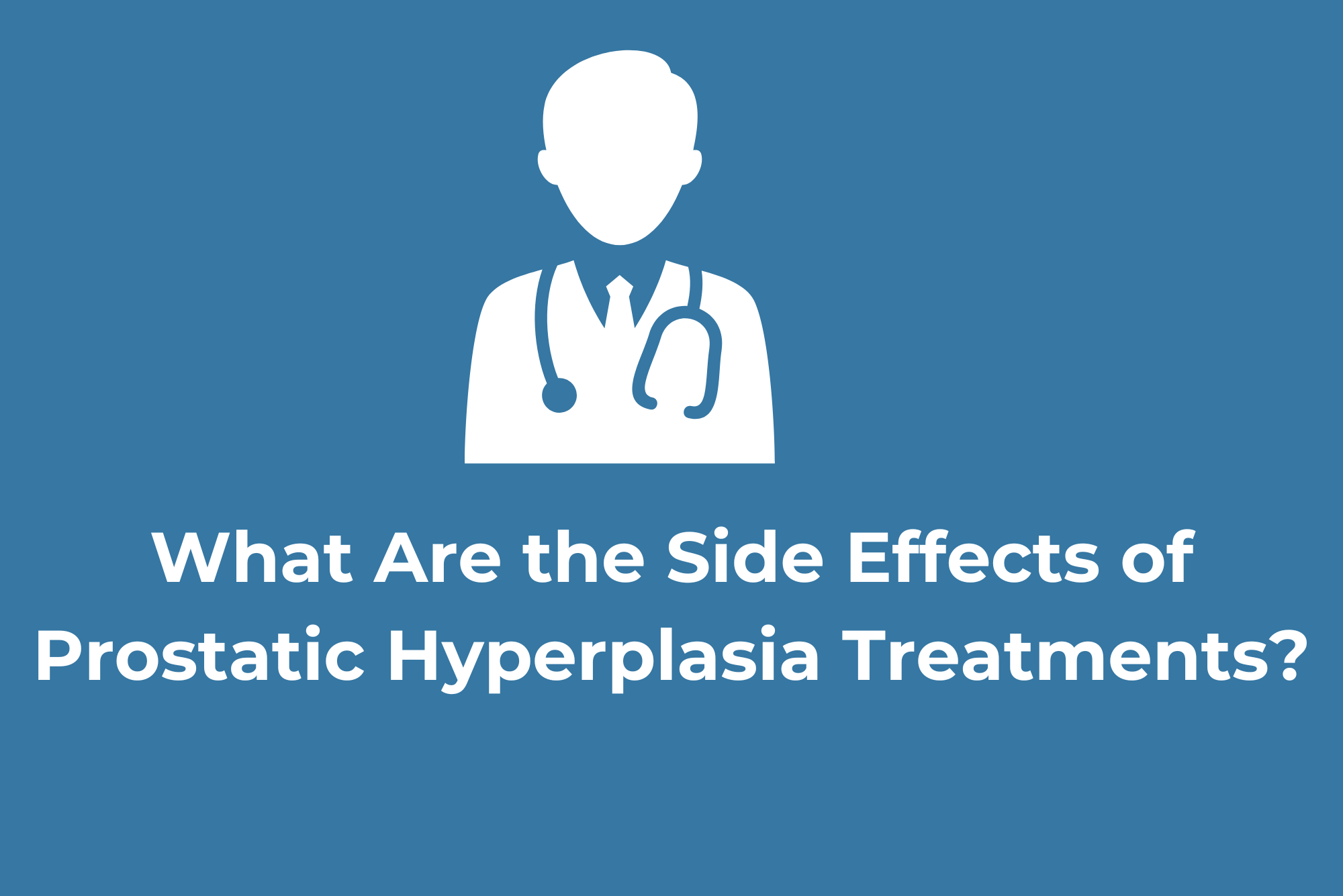Introduction
Prostatic hyperplasia, commonly known as benign prostatic hyperplasia (BPH), is a non-cancerous enlargement of the prostate gland. This condition primarily affects men over 50 and can lead to urinary issues, such as difficulty urinating, weak urine flow, and frequent urination. The prostate is a small gland located below the bladder and surrounding the urethra. It plays a crucial role in male reproductive health by producing seminal fluid, which nourishes and transports sperm. However, when it enlarges, it can compress the urethra, causing uncomfortable urinary symptoms.
Various prostatic hyperplasia treatment options are available, including medications, minimally invasive procedures, and surgical interventions. While these treatments help manage symptoms, they can also lead to side effects that impact a patient’s quality of life. Understanding these potential side effects is essential for making informed healthcare decisions.
Understanding the Function and Role of the Prostate
The prostate is an essential part of the male reproductive system. It produces prostatic fluid, which makes up a significant portion of semen. This fluid helps protect sperm and enhances fertility. The prostate is located just below the bladder and in front of the rectum, wrapping around the urethra.
When the prostate enlarges due to BPH, it affects the normal flow of urine. This can lead to discomfort, incomplete bladder emptying, and, in severe cases, kidney problems. Prostatic hyperplasia does not increase the risk of prostate cancer, but its symptoms can significantly affect daily life, making treatment necessary for many men.
For more information on the prostate and its role in reproductive health, visit prostate.
Common Treatments for Prostatic Hyperplasia and Their Side Effects
1. Medications for Prostatic Hyperplasia
Medications are often the first line of treatment for BPH. The most commonly prescribed drugs include:
- Alpha-blockers (Tamsulosin, Alfuzosin)
- 5-alpha reductase inhibitors (Finasteride, Dutasteride)
- Phosphodiesterase-5 inhibitors (Tadalafil)
Side Effects of Medications:
- Dizziness and Low Blood Pressure: Alpha-blockers relax the muscles around the bladder and prostate, which can cause a sudden drop in blood pressure, leading to dizziness or fainting.
- Sexual Dysfunction: 5-alpha reductase inhibitors can lead to reduced libido, erectile dysfunction, and decreased semen production.
- Retrograde Ejaculation: Some medications cause semen to flow backward into the bladder instead of exiting through the urethra.
- Fatigue and Weakness: Some men experience tiredness and muscle weakness while on these medications.
- Depression and Mood Changes: Hormonal changes caused by 5-alpha reductase inhibitors may lead to mood swings and depressive symptoms.
2. Minimally Invasive Treatments for Prostatic Hyperplasia
For men who do not respond well to medication, minimally invasive procedures offer an alternative. These include:
- UroLift System: Uses small implants to hold the prostate tissue away from the urethra.
- Rezum Therapy: Uses water vapor to shrink the enlarged prostate.
- Prostate Artery Embolization (PAE): Reduces blood flow to the prostate, causing it to shrink.
Side Effects of Minimally Invasive Procedures:
- Urinary Tract Infections (UTIs): Some procedures may increase the risk of infections due to temporary swelling in the urinary tract.
- Pain and Discomfort: Patients may experience mild pain or burning during urination in the first few weeks after treatment.
- Urinary Urgency or Incontinence: Some men may feel the need to urinate more frequently or may have temporary difficulty controlling their bladder.
- Blood in Urine: Procedures like PAE and Rezum therapy can cause temporary bleeding in the urine.
3. Surgical Treatments for Severe Prostatic Hyperplasia
For severe cases, surgery may be necessary. Common surgical procedures include:
- Transurethral Resection of the Prostate (TURP): Removes excess prostate tissue through the urethra.
- Holmium Laser Enucleation of the Prostate (HoLEP): Uses laser energy to remove enlarged prostate tissue.
- Simple Prostatectomy: A more extensive surgery that removes part of the prostate.
Side Effects of Surgical Treatments:
- Erectile Dysfunction: Some men experience temporary or permanent erectile dysfunction after surgery.
- Loss of Ejaculation: TURP and other surgeries may cause retrograde ejaculation, where semen enters the bladder instead of exiting the penis.
- Urinary Incontinence: Some patients may have difficulty controlling their bladder, though this usually improves over time.
- Infections and Scarring: Surgery carries a risk of infections and scarring in the urethra, which can lead to narrowing and additional urinary problems.
For a detailed guide on available treatment options and their potential effects, explore prostatic hyperplasia treatment.
Risk Factors for BPH and Treatment Complications
While BPH is a natural part of aging, several risk factors increase the likelihood of experiencing severe symptoms or treatment-related complications. These include:
- Age: Men over 50 are at a higher risk of developing BPH.
- Family History: Genetics play a role in prostate enlargement.
- Obesity and Poor Diet: High-fat diets and lack of exercise may contribute to prostate growth.
- Diabetes and Heart Disease: These conditions are linked to a higher risk of BPH and complications from treatments.
Men considering treatment should discuss these risk factors with their healthcare provider to choose the safest and most effective option.
Can Lifestyle Changes Reduce Treatment Side Effects?
Many men manage BPH symptoms and reduce treatment side effects through lifestyle changes, including:
- Maintaining a Healthy Diet: Eating more fruits, vegetables, and whole grains can support prostate health.
- Staying Hydrated: Drinking plenty of water helps flush the urinary system and prevents infections.
- Regular Exercise: Physical activity improves overall health and may reduce BPH symptoms.
- Limiting Caffeine and Alcohol: These substances can irritate the bladder and worsen symptoms.
Men who incorporate these habits may experience fewer side effects from medication or surgery while improving their overall prostate health.
Conclusion
Prostatic hyperplasia is a common condition that affects many men as they age. While treatments can relieve symptoms and improve quality of life, they also come with potential side effects. Medications may cause dizziness, sexual dysfunction, and fatigue, while minimally invasive procedures and surgeries carry risks of infections, urinary issues, and erectile dysfunction.
Understanding these risks allows men to make informed choices about their healthcare. Consulting a doctor about the best prostatic hyperplasia treatment options and considering lifestyle modifications can help minimize side effects and maintain a better quality of life.
For more information on holistic health approaches, alternative treatments, and well-being strategies, visit Second Bleach. This platform provides valuable insights into natural remedies and lifestyle changes that support overall health.










